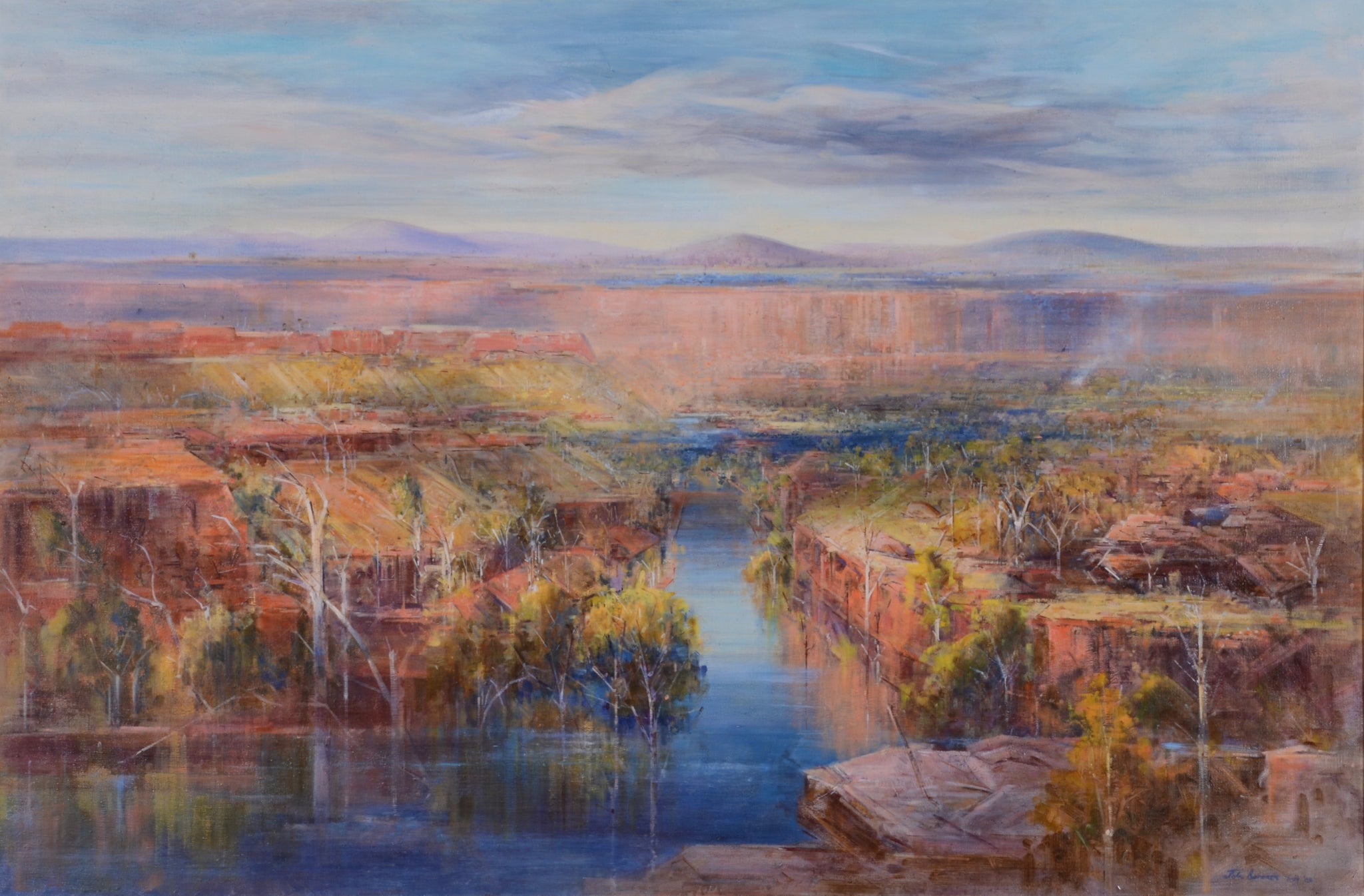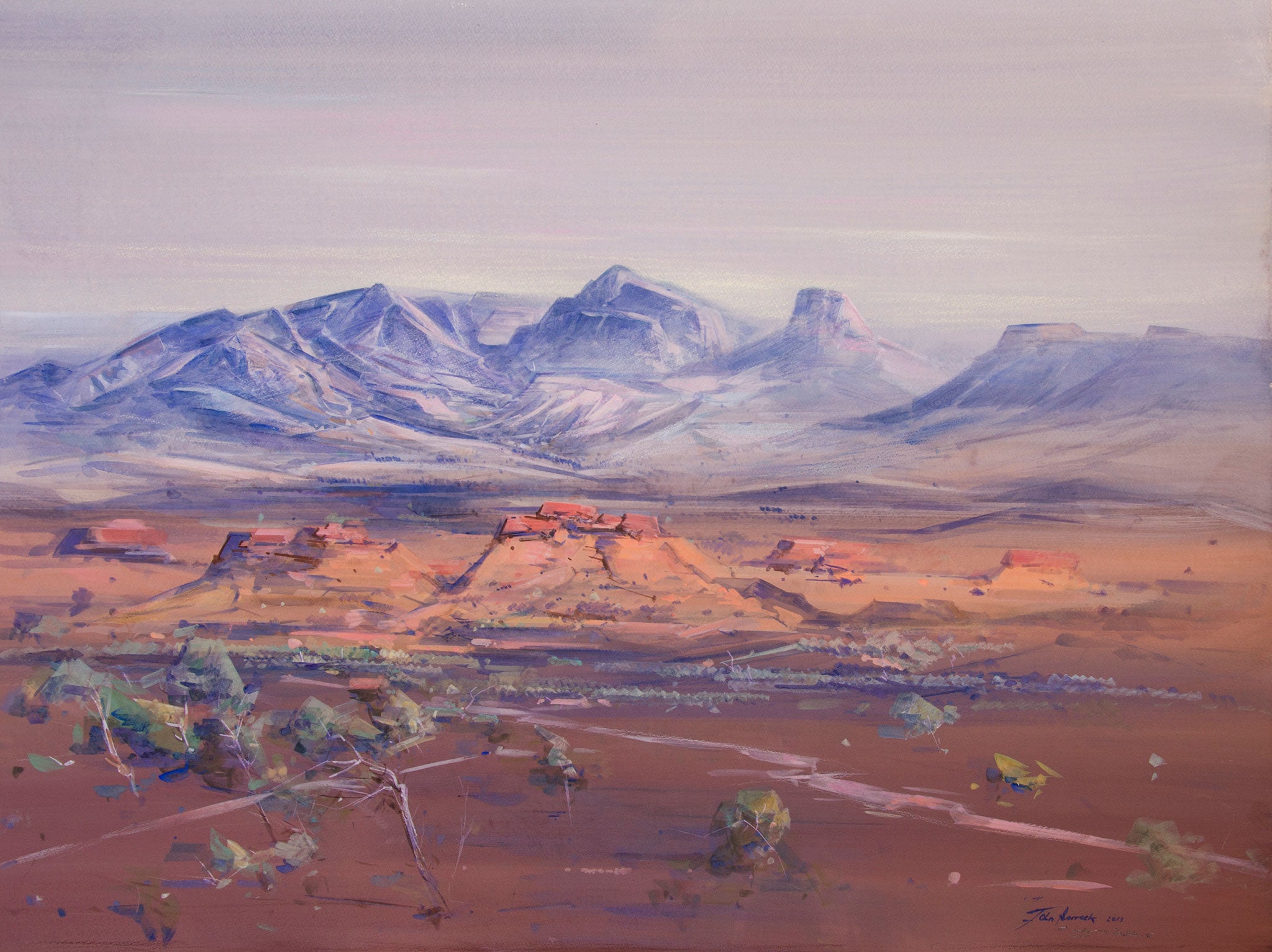In May 1961, I travelled to Central Australia for the first time. As I waited at Essendon Airport to board a DC3 bound for Alice Springs, little did I know what a profound impact that journey would have upon my work.
The view from the slow and low-flying old aircraft was spectacular, and my introduction to the MacDonnell Ranges began before we even touched down. Exploring from the ground in the days ahead, spell binding impressions of gorges, the Western MacDonnells and Palm Valley changed my whole attitude to making a graphic statement of the Australian Landscape.
It is the high-keyed transparency of the Australian light which must be reconciled with structure and form in painting that is endlessly hypnotic and challenging for me.
Such phenomena exist in all our desert landscapes — the Kimberley, Pilbara, and Central Australia. So, the problem is to express a dry northern continent of unbelievable magic — not just a topographical recording of one specific place — but to find a solution that communicates the experience.
 Gorge, Hammersley Ranges, 2008, Oil on Canvas, 122 x 183 cm
Gorge, Hammersley Ranges, 2008, Oil on Canvas, 122 x 183 cm
In her 2012 book, In Praise of Landscape — The Art of John Borrack, Lucy Ellem said of Gorge, Hammersley Ranges, “This is no one place, but a landscape of the mind, a composite image which draws together memories and experiences, of a lifetime of artistic exploration. It is a summation of a life’s experience, of the desire to know “what’s out there” — to know consciously as an Australian, the vast Australian Continent”
A constant renewal with Central Australia and the North West of Australia leads to the development of new works. I have returned to the deserts of Australia more than a dozen times since that first journey over fifty years ago. My most recent trip in 2013 saw me re-explore many of the places I first visited on that trip in 1961, and to this day I continually revisit the challenge of painting the Australian desert landscape.
 Desert Landscape with Mount Sonder, 2013, Gouache and Watercolour on Paper, Mounted, 72 x 95 cm
Desert Landscape with Mount Sonder, 2013, Gouache and Watercolour on Paper, Mounted, 72 x 95 cm
